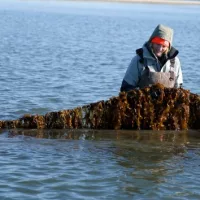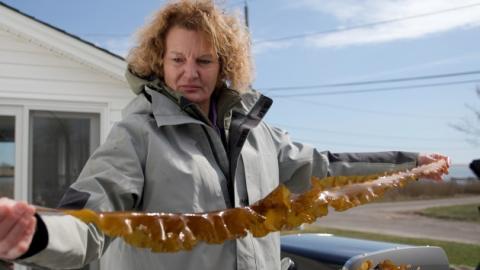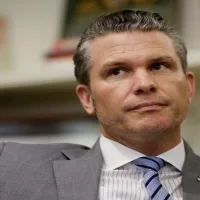
(NEW YORK) — Underwater forests could be the answer to helping to mitigate the environment from the impacts of climate change, experts told ABC News.
Kelp, large brown algae or seaweeds that grow in shallow oceans, is a nutrient-rich species that grows quickly, helping it to absorb carbon dioxide at a higher rate than other ecosystems, including all of the CO2 released from eelgrass, salt marshes and mangroves combined, according to the National Oceanic and Atmospheric Administration.
The efficiency at which kelp is able to pluck the greenhouse gas out of the atmosphere is one of the many reasons why it is increasingly being identified as a potential solution to climate change, the experts said. In addition, the growth requires no fertilizer or fresh water, making it nearly 100% sustainable.
Often farmed next to oysters and mussels, kelp can be used for a multitude of purposes, including both food and cosmetic applications. There are likely uses of kelp that haven’t even been discovered yet, Sue Wicks, kelp farmer and oyster farmer on Long Island, New York, told ABC News.
“Kelp is an environmental powerhouse,” Wicks said.
Wicks, a former WNBA player, is now continuing a 400-year tradition of generations of family working on the water, she said. Her ancestors arrived in the region in the 1600s, and her father, grandfather, and great-grandfather — tracing all the way back — were baymen.
But in the 1980s, brown tides along the Long Island coast decimated the aquaculture industry, Wicks said. Long Island was previously home to the largest bay scallop fishery on the East Coast, but harmful algal blooms beginning in the 1980s and 1990s led to the collapse of the industry.
“Pollutants, septic runoff, lawns, fertilizers — and that’s nitrogen getting in the water, which is an explosive growth accelerant for the algae,” Wicks said. Once the algal blooms spread, it “chokes the life out of the water” and can cause thousands of fish to wash up dead, she added.

Anthropogenic, or human-caused, climate change threatens to worsen those algal blooms as well as add other heat-related issues, such as acidification — a process that is already killing off coral reefs, Christopher Gobler, a researcher at the School of Marine and Atmospheric Sciences at Stony Brook University on Long Island, told ABC News.
“More CO2 into the ocean, lowers the pH of the ocean seawater and makes it more acidic,” Gobler said. “And that is a danger to a lot of marine life.”
The acidification doesn’t allow oysters, clams or mussels to form properly because the acidity eats their little shells when they’re so vulnerable, Wicks said. Therefore, the region rarely gets naturally propagating native oysters anymore.
Gobler began incorporating seaweed into his labs about a decade before kelp. When researchers put the kelp into water, they observed it taking carbon dioxide and nitrogen out of the water and replacing it with oxygen, Gobler said.
A 1-acre kelp farm in the Moriches Bay can remove as much nitrogen as 20 advanced septic systems, Gobler said.
Kelp farming has been growing in the U.S. in recent years. In 2021, New York Gov. Kathy Hochul signed legislation to permit kelp cultivation and to restore water quality and marine life habitats.
There are about 35 oyster farms on Long Island, but Wicks is the only farm permitted to grow sugar kelp, a species that Wicks is using as a soil amendment — a more sustainable form of fertilizer without the dangerous chemicals, she said.
The quest to ensuring a healthy environment will require efforts from all fronts, Wicks said.
“We’ll let Mother Nature do hers, the farmers will do ours, and then entrepreneurs and scientists can do their part,” she said.
Copyright © 2024, ABC Audio. All rights reserved.















